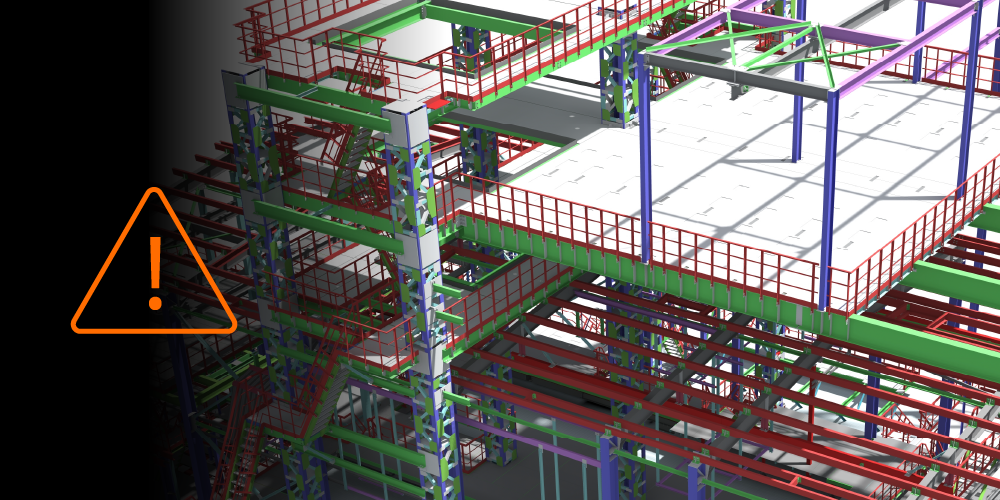Related Articles
— 8 min read
12 Types of Subcontractors in Construction

Last Updated Sep 10, 2025

Tamara Harris
Strategic Product Consultant
Tamara has experience in a broad number of topics across construction. From her various roles in Procore as a product consultant to eventually supporting larger construction companies, Tamara understands the industry and is eager to help continue to make it better.
Last Updated Sep 10, 2025

Construction projects often require a variety of companies to work together to complete a project. Such companies consist of head contractors and subcontractors. Head contractors not only manage the project and consult with owner-developers but also hire subcontractors to perform specialised work, such as plumbing, electrical, bricklaying and other licensed trade work. There is also a growing demand for ‘green’ services, where subcontractors design and implement energy-efficient solutions into new and existing buildings.
Understanding the differences between head contractors and subcontractors — and the different sub-categories of subcontractors — is vital to establishing fair, honest and legally binding working relationships where both parties fully understand their rights, roles and responsibilities. We’ll find out what makes subcontractors unique and look at a few subcontracting examples.
Table of contents
Understanding the role of a subcontractor
A subcontractor is a person who runs their own business and sells their services to others. They use their own tools, methods and processes to complete their work, negotiate their own fees and have the freedom to work for more than one client at once.
A head contractor is a person or business that holds a contract with an owner-developer. They make sure that the performed construction work aligns with the agreed terms and standards of the contract.
To achieve this, they often hire subcontractors to perform all or part of the specialised work. For example, they may hire an electrician to complete the wiring for a new commercial building. Subcontractors may also hire their own sub-subcontractors to assist with specialised work.
Here is a breakdown of the organisational structure between contractors on a construction project:
- Owner-developer: The owner-developer hires the head contractor (HC) to oversee and manage the project.
- Head contractor: The HC hires subcontractors as specialised tradespersons to complete specific tasks on the project.
- Subcontractor: A specialised tradesperson hired to complete a certain task on a construction project, such as electrical wiring, plasterboard installation or steel framing.
- Sub-subcontractor: On exceptionally large or complex projects, a subcontractor may hire sub-subcontractors to complete an even more specialised part of the contract scope.
Learn more: 5 Types of Construction Agreements
Different types of subcontractors
Let’s cover the different types of subcontracting examples that you will encounter in the construction industry.
Site preparation
Not every construction site is ready for a new build straight away. A site may have existing structures and organic matter – buildings, trees, rocks, leaves, uneven terrain and soil of questionable quality.
This is where site preparation subcontractors come in. Using specialist tools and equipment, they effectively remove all obstructions. This enables the construction team to test the soil and determine what type of foundation to use. The team may also use BIM software to design the layout of the construction site. From there, the site preparation subcontractor will even out the terrain or excavate the area.
On smaller projects, a HC may prepare the site themselves, or a concrete subcontractor may hire a sub-subcontractor to prepare the site.
Concrete
Concrete subcontractors prepare and construct concrete structures. They prepare the aggregate, a combination of sand and other raw materials, and use a certain amount of cement and water to bond the aggregate together. Examples of plain concrete structures include foundations and footings, and surfaces like driveways and walkways.
When concrete structures need to be of a certain shape and strength, concrete subcontractors use precast concrete. With this technique, they shape and mould the concrete offsite, and then deliver it to the main construction site as a complete structure
Structure & Framing
Structural framing is the process of laying down the materials that define the shape and structure of a building. Such materials consist of wood, steel, metal and concrete products, which serve as the structural foundation of a building’s floors, walls and roofs. Depending on the project scope, a HC may build their own wood frames, but they will usually need a framing and structural subcontractor to do all, or a portion, of the work.
Framing and structural subcontractors may also install exterior sheathing, windows and exterior doors. On larger projects, other subcontractor types may be called upon to install the glass, metal siding and roofing.
For large steel structure projects, a HC may hire a steel erection contractor. Steel erectors specialise in constructing new steel structures and reinforcing the strength of existing steel structures. To access specialist equipment, they typically hire a crane company as a sub-subcontractor.
Roofing, Siding & Sheet Metal
When the time comes to dry the building envelope (i.e. to enclose the building and protect the roof, sub floor, doors, windows, etc. from external weather), a HC will typically hire subcontractors to do the job.
These subcontractors specialise in the design and installation of interior and exterior features, such as roofing, siding, glazing, stucco and sheet metal work. They typically build their prefabricated materials in their shop, and then deliver and install the materials onsite. This helps speed up the process of enclosing the building, which allows the interior fit out to begin.
Plumbing
Plumbers specialise in the design, supply and maintenance of residential and commercial piping and water systems. They also install facilities that use water, like bathtubs and dishwashers, and systems that carry water from the source to its destination, like waste lines, vents and water pipes. Plumbers may also hire septic or excavation sub-subcontractors to install tanks and septic – or the HC may hire them themselves. Other subcontracting examples include mechanical contractors, who take on the plumbing scope of a project in addition to HVAC and gas.
HVAC
The role of a heating, ventilation and air conditioning (HVAC) subcontractor is simple: to ensure that a building’s climate is safe and comfortable for all occupants. They design and install turnkey climate control solutions, such as gas ducted heating, air conditioning and evaporative cooling. They may also install industrial ventilation solutions, such as dust collection air filters and fume control systems, and assist with plumbing and gas work.
Electrical
Electrical subcontractors are required on many construction sites. They install electrical panels, wires, fixtures, generators, transfer switches and other electrical infrastructure. Put simply, they carry out the electrical work that a head contractor is not licensed to do.
Electrical subcontractors must be licensed and comply with Australian Standard AS 3000, which outlines the requirements for the design, installation and verification of electrical installations.
For new or highly renovated projects, electrical subcontractors may supply a temporary power supply connection, which enables the construction team to use electrical equipment onsite.
Electricians interact with every trade on the job and need access to every drawing section including mechanical schedules, architectural elevations and shop drawings to coordinate equipment feed size and locations.
Carpentry
If HCs and framing subcontractors manage the exterior structure of a building, then carpentry subcontractors manage the interior work. They build, repair and install products made of wood and plywood, including wooden floorboards, cabinetry and trims. They also craft intricate, decorative interior accents, such as cornice and skirting mouldings.
Not all carpentry subcontractors are equal; some perform general carpentry work, while others focus on a niche craft.
Masonry & Stonework
Masonry and stonework subcontractors work with rough materials — brick, stone, clay, mortar plastering — to construct interior and exterior features. Subcontracting examples of stone and masonry work include stairs, retaining walls, fireplaces and stone cladding. They may also provide remedial masonry, fixing damaged or poor-quality work or restoring heritage buildings.
Plasterboard
Plasterboard subcontractors specialise in the installation, repair and finish of walls and ceilings made from plasterboard. Since most residential, commercial and government construction projects require interior plasterboard, their services are in high demand.
Plasterboard subcontractors install plasterboard panels onto the framing of walls and ceilings, using screws and joint tape to secure the panels in place. They may also perform light gauge interior framing and, depending on the project scope and subcontractor’s abilities, apply texture and paint or wallpaper to the plasterboard.
Painting & Interior Design
Bringing buildings to life with colour and artistry is what painters and design subcontractors do best.
Painting subcontractors ensure the perfect finish every time by preparing surfaces with masking, sanding, priming and caulking. They then use their skills, creativity and attention to detail to paint interior and exterior features, such as walls, door and window frames, fences and more. Commercial painting subcontractors specialise in painting commercial building fixtures, such as stairwells, carpark signage and support posts.
Interior design subcontractors install artwork and mirrors, offer placement advice and install picture-hanging systems. They also assist with commercial fit outs, installing decorative wall features for offices, retail stores and galleries.
Tiling
All tile work, whether it be flooring, showers, backsplashes, lobbies or accent walls, is the responsibility of a tile setting contractor. Tiling contractors use specialist tools, methods and processes to supply and install tiling safely and efficiently. They also use their connections to get their hands on rare or unique tiles, and some even install wood or vinyl flooring.
Subcontractor variety in construction
Complex, large-scale construction projects require a lot of hands to get the job done. This article is by no means an exhaustive list of every trade, but you hopefully get an idea of just how vast the industry is. Trade coordination is key, and it is crucial for the HC to manage project schedules, so trades are not in conflict with one another.
Keeping up with who is working where and when impacts schedule, budget, quality and safety. Having an expert's understanding of how each of these trades operates is critical for a head contractor to ensure a project is completed on time and on budget.
See what’s coming in construction over the next decade.
Download the Future State of Construction Report for insights, trends, and innovations shaping the industry over the next 8–10 years.

Categories:
Written by

Tamara Harris
Strategic Product Consultant | Procore
Tamara has experience in a broad number of topics across construction. From her various roles in Procore as a product consultant to eventually supporting larger construction companies, Tamara understands the industry and is eager to help continue to make it better.
View profileExplore more helpful resources

Managing Direct Costs in Construction: How Visibility Drives Profitability
Direct costs define the financial reality of every construction project. They cover the labour, materials, and equipment that drive delivery and determine profitability. But even the best-planned budgets can shift...

BIM Clash Detection: Reducing Rework, Delays, and Risk in Construction
Design clashes can be a significant hidden cost in construction, as each conflict between systems risks expensive rework, project delays, and reduced margins. BIM clash detection empowers teams to identify...

Next-Gen Job-Costing: Ready to Move? 5 Things to Consider Before You Get Started
In this three-part series, Quantity Surveyor turned Financial Solutions Specialist Clint Burgess uncovers the real-world gains for people, processes, and profits when businesses move from legacy to next-generation Enterprise Resource...

From Workarounds to Workflow: Solving Construction’s Legacy Job-Costing System Challenges with Next-Gen Tools
In this three-part series, Quantity Surveyor turned Financial Solutions Specialist Clint Burgess uncovers the real-world gains for people, processes, and profits when businesses move from legacy to next-generation Enterprise Resource...
